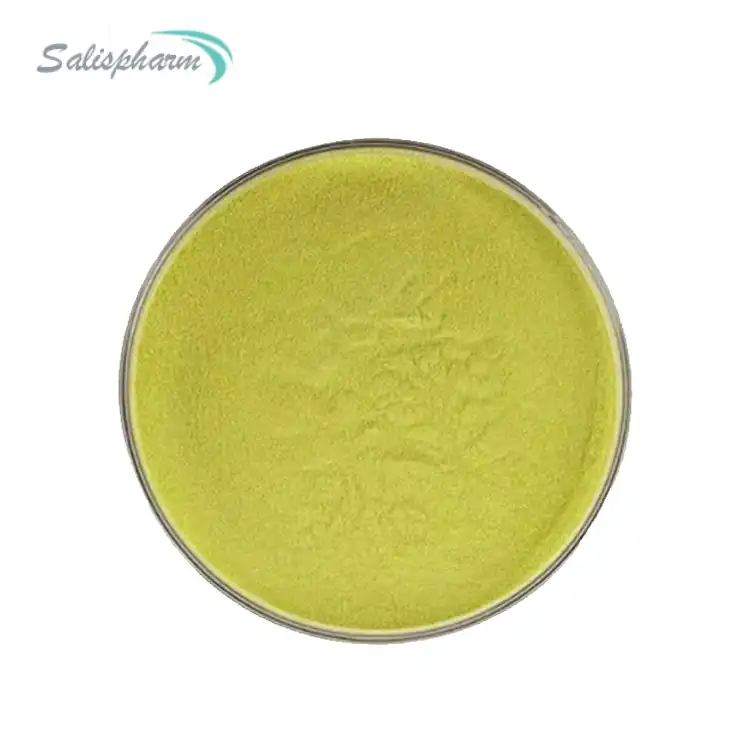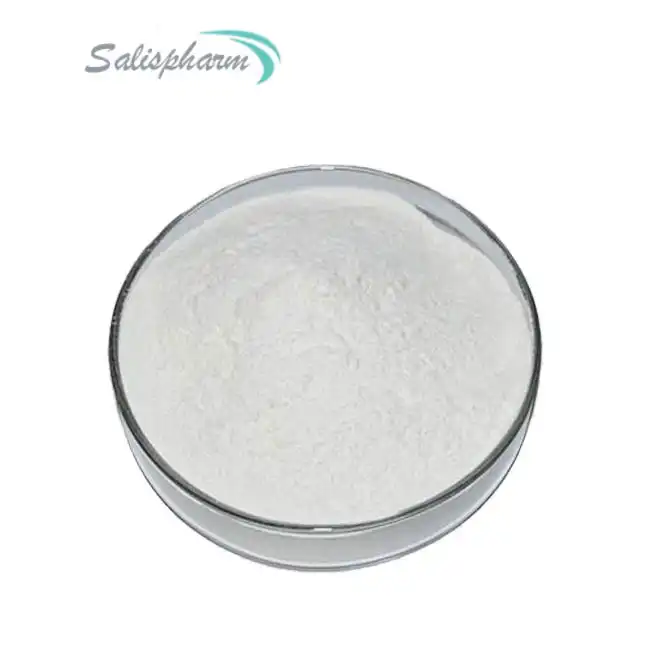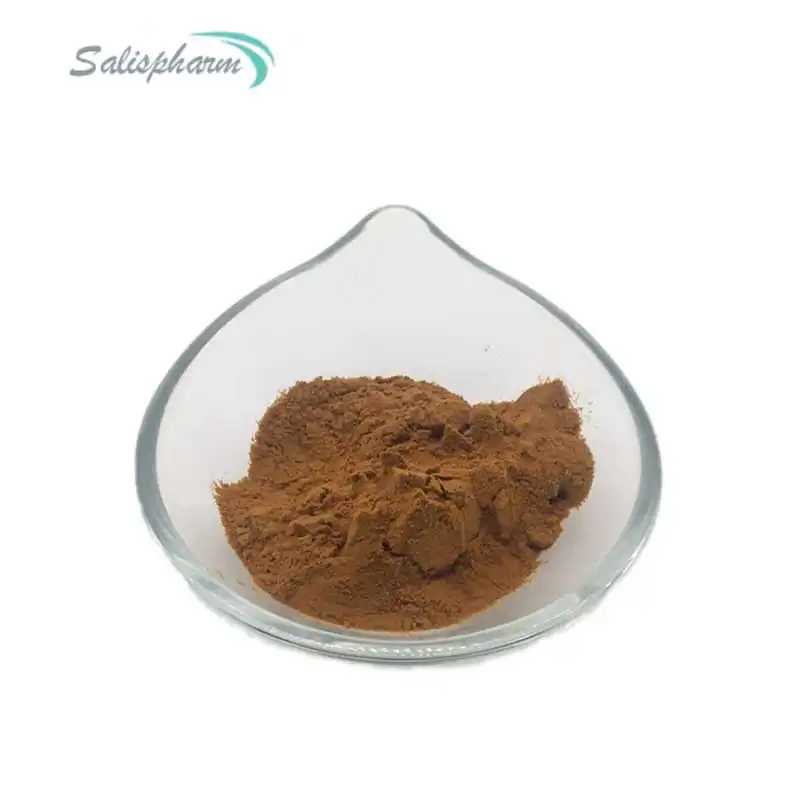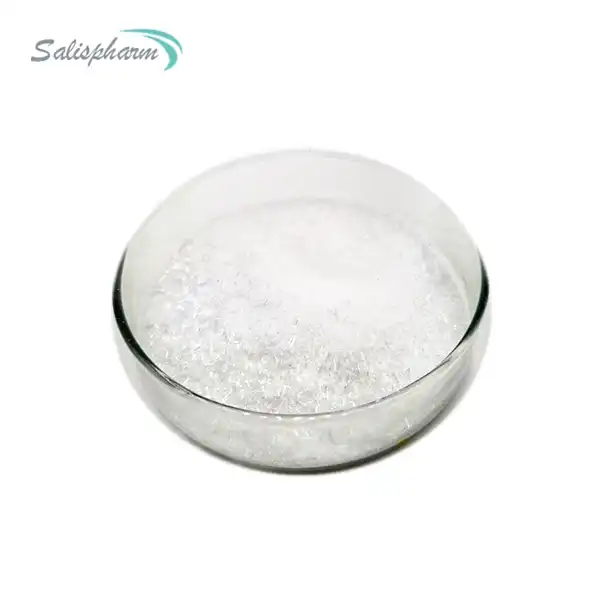Sore throats can be a common and uncomfortable ailment, often leaving us searching for effective remedies. Ambroxol, a medication known for its mucolytic properties, has gained attention as a potential solution for sore throat relief. This blog post will explore the use of ambroxol for sore throats, its benefits, and important considerations for those seeking relief.
What is ambroxol powder and how does it work for sore throats?
Ambroxol powder is a pharmaceutical compound derived from bromhexine, which belongs to a class of medications known as mucolytics. Its primary function is to thin and loosen mucus in the airways, making it easier to cough up and expel. When it comes to sore throats, ambroxol's mechanism of action offers several benefits:
1. Mucolytic action: Ambroxol helps break down thick, sticky mucus that can accumulate in the throat and airways during infections or allergies. By thinning this mucus, it reduces irritation and discomfort in the throat.
2. Anti-inflammatory properties: Research has shown that ambroxol possesses mild anti-inflammatory effects. This can help reduce swelling and redness in the throat tissues, providing relief from pain and discomfort.
3. Local anesthetic effect: One of the unique features of ambroxol is its ability to act as a local anesthetic. When taken orally or as a lozenge, it can numb the throat tissues, offering temporary relief from pain and soreness.
4. Stimulation of surfactant production: Ambroxol stimulates the production of surfactant, a substance that helps maintain the proper function of the respiratory tract. This can contribute to overall throat health and comfort.
The combination of these actions makes ambroxol an attractive option for those seeking relief from sore throats. Its multifaceted approach addresses not only the symptoms but also some of the underlying causes of throat discomfort.
It's important to note that while ambroxol powder can be dissolved in water to create a drinkable solution, it's more commonly available in other forms such as tablets, syrups, or lozenges. Always follow the recommended dosage and administration instructions provided by your healthcare provider or the product packaging.
How long does it take for ambroxol to work on a sore throat?
The onset of action for ambroxol can vary depending on several factors, including the severity of the sore throat, the individual's metabolism, and the form of ambroxol being used. However, many users report experiencing some degree of relief within 30 minutes to an hour after taking the medication.
1. Immediate effects: The local anesthetic properties of ambroxol powder can provide quick relief from throat pain. This numbing effect is often noticeable shortly after taking the medication, especially when using lozenges or oral solutions that come into direct contact with the throat tissues.
2. Mucolytic action: The mucolytic effects of ambroxol, which involve thinning and loosening mucus, may take a bit longer to become noticeable. Typically, users might experience improved mucus clearance within 1-2 hours after taking the medication.
3. Anti-inflammatory benefits: The anti-inflammatory properties of ambroxol may take several hours to fully manifest. Some users report a gradual reduction in throat swelling and discomfort over the course of a day or two with regular use.
4. Cumulative effects: For optimal results, ambroxol is often recommended to be taken regularly over a period of several days. This allows the medication to build up in the system and provide more consistent relief.
It's worth noting that while ambroxol can provide relatively quick relief for many users, it's not an instant cure for sore throats. The medication works best when used as part of a comprehensive approach to throat care, which may include staying hydrated, getting plenty of rest, and avoiding irritants like smoking or excessively cold beverages.
If you're using ambroxol for a sore throat and don't experience any improvement after 24-48 hours, or if your symptoms worsen, it's advisable to consult with a healthcare professional. They can assess your condition and determine if additional treatments or interventions are necessary.
Can ambroxol be used for dry cough and throat irritation?
Ambroxol is not only effective for sore throats but can also be beneficial for dry coughs and throat irritation. Its versatile properties make it a popular choice for addressing various respiratory and throat-related issues:
1. Dry cough relief: While ambroxol is primarily known as a mucolytic agent, it can also help with dry, non-productive coughs. The medication's ability to stimulate surfactant production helps to lubricate the airways, reducing the irritation that often leads to dry coughing fits. Additionally, its mild anesthetic effect can help suppress the cough reflex, providing relief from persistent coughing.
2. Soothing throat irritation: Throat irritation can have various causes, including allergies, environmental factors, or overuse of the voice. Ambroxol's anti-inflammatory and local anesthetic properties can help soothe irritated throat tissues, providing comfort and reducing the urge to cough or clear the throat excessively.
3. Improving throat comfort: For individuals experiencing throat discomfort due to dryness or irritation, ambroxol powder can help improve overall throat comfort. By promoting better mucus clearance and reducing inflammation, it can create a more comfortable environment in the throat and upper respiratory tract.
4. Supporting vocal health: People who use their voices professionally, such as singers or public speakers, may find ambroxol helpful in maintaining vocal health. Its ability to keep the throat lubricated and reduce inflammation can be particularly beneficial during periods of intense vocal use.
5. Addressing post-nasal drip: In cases where throat irritation is caused by post-nasal drip (mucus dripping down the back of the throat), ambroxol's mucolytic action can help thin the mucus, making it easier to clear and reducing throat irritation.
When using ambroxol for dry cough and throat irritation, it's important to consider the following:
- Proper dosage: Follow the recommended dosage instructions carefully. Overdosing on ambroxol won't necessarily provide faster or better relief and may increase the risk of side effects.
- Hydration: While ambroxol can help with throat lubrication, it's essential to stay well-hydrated by drinking plenty of water. This helps support the medication's effects and promotes overall throat health.
- Underlying causes: If dry cough or throat irritation persists despite using ambroxol, it's important to identify and address any underlying causes, such as allergies, acid reflux, or environmental irritants.
- Combination with other treatments: Ambroxol can be used in conjunction with other throat-soothing remedies, such as honey, warm tea, or throat lozenges. However, always consult with a healthcare professional before combining medications.
- Duration of use: While ambroxol is generally safe for short-term use, prolonged use for chronic dry cough or throat irritation should be discussed with a healthcare provider to ensure it's the most appropriate treatment approach.
In conclusion, ambroxol powder offers a multifaceted approach to addressing sore throats, dry coughs, and throat irritation. Its combination of mucolytic, anti-inflammatory, and local anesthetic properties makes it a versatile option for those seeking relief from various throat-related discomforts. However, as with any medication, it's important to use ambroxol responsibly and in consultation with a healthcare professional, especially for prolonged or severe symptoms. By understanding how ambroxol works and using it appropriately, individuals can effectively manage their throat discomfort and support overall respiratory health.
If you are also interested in this product and want to know more product details, or want to know about other related products, please feel free to contact iceyqiang@aliyun.com.
References:
1. Malerba, M., & Ragnoli, B. (2008). Ambroxol in the 21st century: pharmacological and clinical update. Expert Opinion on Drug Metabolism & Toxicology, 4(8), 1119-1129.
2. Nobata, K., Fujimura, M., Ishiura, Y., Myou, S., & Nakao, S. (2006). Ambroxol for the prevention of acute upper respiratory disease. Clinical and Experimental Medicine, 6(2), 79-83.
3. Germouty, J., & Jirou-Najou, J. L. (1987). Clinical efficacy of ambroxol in the treatment of bronchial stasis. Clinical trial in 120 patients at two different doses. Respiration, 51(Suppl. 1), 37-41.
4. Weiser, T., & Wilson, N. (2002). Inhibition of tetrodotoxin (TTX)-resistant and TTX-sensitive neuronal Na+ channels by the secretolytic ambroxol. Molecular Pharmacology, 62(3), 433-438.
5. Beeh, K. M., Beier, J., Esperester, A., & Paul, L. D. (2008). Antiinflammatory properties of ambroxol. European Journal of Medical Research, 13(12), 557-562.
6. Kern, W. V., Sperandio, M., et al. (2017). Pharmacology of ambroxol. Pneumologie, 71(09), 564-570.
7. Chenot, J. F., Weber, P., & Friede, T. (2014). Efficacy of Ambroxol lozenges for pharyngitis: a meta-analysis. BMC Family Practice, 15(1), 45.
8. Gibbs, B. F., Schmutzler, W., Vollrath, I. B., Brosthardt, P., Braam, U., Wolff, H. H., & Zwadlo-Klarwasser, G. (1999). Ambroxol inhibits the release of histamine, leukotrienes and cytokines from human leukocytes and mast cells. Inflammation Research, 48(2), 86-93.
9. Paleari, D., Rossi, G. A., Nicolini, G., & Olivieri, D. (2011). Ambroxol: a multifaceted molecule with additional therapeutic potentials in respiratory disorders of childhood. Expert Opinion on Drug Discovery, 6(11), 1203-1214.
10. Patasova, L. N., & Ivanova, L. A. (2019). Expectorant and mucolytic therapy: rational choice. RMJ, 8, 49-52.









